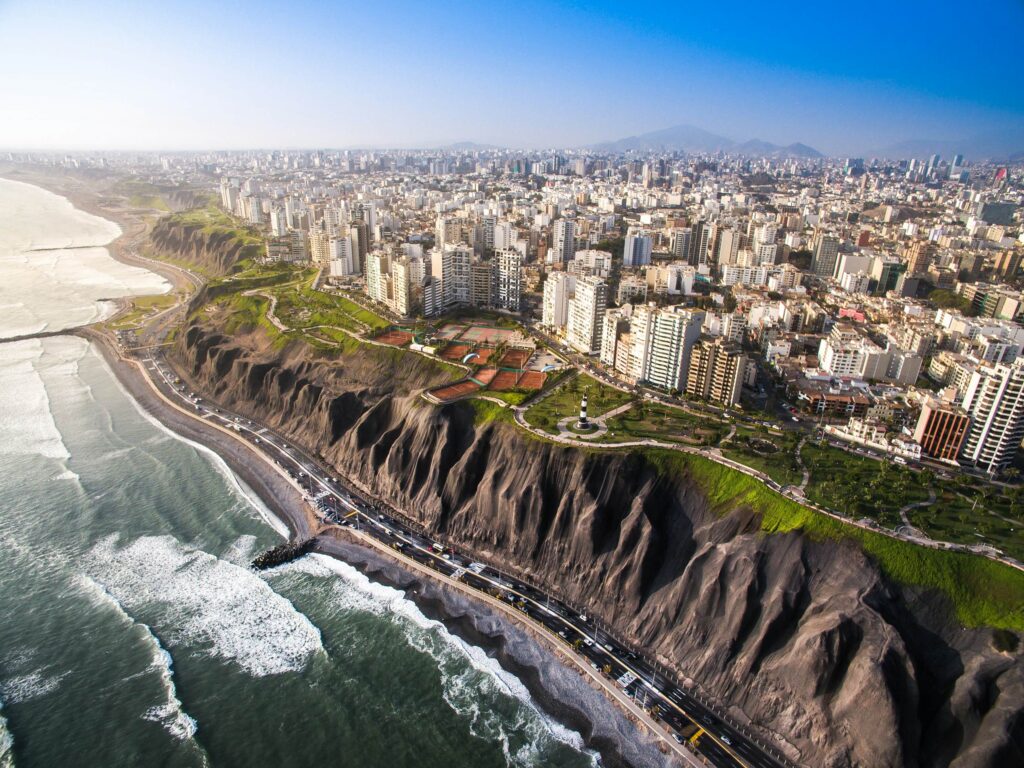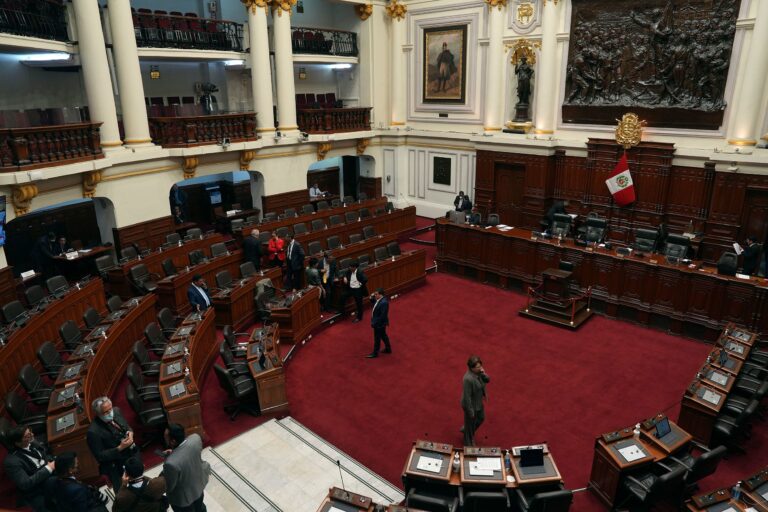
Key Points
- The Central Bank of Peru has raised its 2025 GDP growth forecast to 3.2%, up from a previous estimate, reflecting optimism for economic recovery.
- Research suggests this revision is driven by increased public investment, higher private consumption, and stable commodity prices, particularly for copper and gold.
- The government’s forecast is more optimistic at 4%, indicating some variation in projections.
- It seems likely that challenges like social unrest and global economic conditions could impact growth, but Peru is poised for strong regional performance.
Background
Peru, a key player in Latin America, has faced economic challenges in recent years, with 2023 GDP growth at just 0.9%. However, recent forecasts suggest a rebound, supported by infrastructure projects and favorable commodity markets. The Central Bank of Peru’s latest revision to 3.2% for 2025 highlights this recovery, while the government’s 4% projection shows differing expectations.
Driving Factors
The upward revision is linked to greater internal demand, with increased public investment in projects like the Chancay mega-port (Reuters) and higher private consumption, bolstered by stable inflation at around 2%. Copper and gold, major exports, are expected to drive growth due to high global demand.
Challenges and Outlook
While the forecast is positive, social unrest in mining regions and global economic uncertainties pose risks. For 2026, the Central Bank predicts a slowdown to 2.9%, with fiscal consolidation reducing public investment. Peru aims to reduce its fiscal deficit to 2.2% in 2025 and 1.8% in 2026, supporting long-term stability.
Detailed Economic Analysis: Peru’s 2025 GDP Growth Forecast and Implications
Introduction and Context
On March 21, 2025, the Central Bank of Peru (BCRP) announced a revision of its GDP growth forecast for 2025, increasing it by 0.2 percentage points to 3.2%, as reported by Forbes España. This adjustment reflects a more optimistic outlook for Peru’s economy, which has been navigating through political instability, social unrest, and global economic challenges in recent years. Peru, known for its strong historical performance in Latin America, faced a significant slowdown in 2023, with GDP growth at just 0.9%, well below initial expectations. The revised forecast of 3.2% for 2025 signals a robust recovery, positioning Peru as one of the region’s fastest-growing economies, second only to Argentina according to some projections (Reuters).
This report delves into the factors driving this revision, compares it with other forecasts, and examines the broader economic implications, including challenges and future outlook. It also incorporates data from the BCRP’s Inflation Report for September 2024 (Central Bank of Peru) and IMF projections (IMF) to provide a comprehensive analysis.
Revised Forecast and Driving Forces
The BCRP’s decision to raise the 2025 GDP growth forecast to 3.2% is attributed to several key drivers, as outlined in the Forbes España article. These include:
- Increased Public Investment: The Peruvian government has prioritized infrastructure development, with major projects such as the $3.6 billion Chancay mega-port and the $565 million Huancayo-Huancavelica railway enhancing trade capacity and attracting foreign direct investment (FDI). These initiatives are crucial for connecting Peru’s mineral-rich regions to global markets, boosting economic activity.
- Higher Private Consumption: With inflation remaining stable at around 2%—well within the central bank’s target range—consumer confidence has improved. This has led to increased private consumption, which is expected to continue fueling economic growth. The BCRP’s monetary policy, including a recent reduction of the benchmark interest rate to 4.75% in January 2025 (Infobae), supports this trend by lowering borrowing costs.
- Stable Commodity Prices: Peru is the world’s second-largest copper producer, and copper prices have remained high due to strong global demand, particularly from China. Similarly, gold prices have been stable, contributing to robust export revenues. These high commodity prices are a significant tailwind for Peru’s mining sector, which remains a cornerstone of its economy, accounting for 12% of global copper supply (The Rio Times).
The revision also comes in the context of a broader recovery from the 2023 contraction, with the BCRP noting greater internal demand as a key factor. This is consistent with earlier projections, such as the IMF’s 2025 forecast of 2.6% GDP growth (IMF), though the BCRP’s update is more optimistic, reflecting recent economic data.
Comparative Analysis with Government Projections
Interestingly, the Peruvian government’s forecast, as stated by Economy Minister José Salardi in February 2025, is more bullish at 4% (Reuters). This discrepancy highlights varying expectations, with the government citing similar drivers, including increased public investment and high commodity prices. The government’s projection was revised upwards by 0.9 percentage points from 3.1%, suggesting a more aggressive stance on growth potential. This variation underscores the complexity of economic forecasting, with the BCRP adopting a more conservative approach at 3.2%.
Economic Indicators and Supporting Data
To provide a deeper understanding, here are key economic indicators for 2025, as derived from the BCRP’s Inflation Report for September 2024 and other sources:
| Indicator | 2025 Forecast |
|---|---|
| GDP Growth | 3.2% |
| Inflation | 2.0% |
| Fiscal Deficit (% of GDP) | 2.2% |
| Current Income (% of GDP) | 20.6 |
| Current Income Real % Change | 9.5% |
| Non-Financial Expenditure (% of GDP) | 20.8 |
| Non-Financial Expenditure Real % Change | 0.8% |
| Credit to Private Sector in Domestic Currency Real % Change | 6.0% |
| Total Credit to Private Sector Real % Change | 5.0% |
| Credit/GDP Ratio | 39.9% |
| Liquidity/GDP Ratio | 44.6% |
| Currency in Circulation Real % Change | 0.0% |
This table illustrates the BCRP’s expectations for a balanced growth trajectory, with stable inflation and moderate credit expansion supporting economic activity.
Additionally, comparative context for Latin America’s current account balances, as per the Inflation Report, provides insight into regional dynamics:
| Country | 2021 | 2022 | 2023 | Q1.24 | Q2.24 | 2024* | 2025* |
|---|---|---|---|---|---|---|---|
| Brazil | -1.7 | -2.1 | -1.0 | -1.1 | -1.5 | -2.4 | – |
| Chile | -7.3 | -8.7 | -3.6 | -3.6 | -3.1 | -2.1 | -2.4 |
| Colombia | -5.6 | -6.1 | -2.5 | -2.2 | -1.9 | -2.8 | -3.4 |
| Mexico | -0.3 | -1.2 | -0.3 | -0.1 | -0.1 | -0.9 | -0.9 |
| Peru | -2.1 | -4.0 | 0.8 | 1.3 | 1.7 | 1.6 | 0.8 |
While this table focuses on current account balances, it highlights Peru’s improving position, with a projected surplus in 2025, supporting the GDP growth forecast.
Challenges and Risks
Despite the optimistic outlook, several challenges could impact Peru’s growth trajectory. Social unrest, particularly in mining regions, has historically disrupted operations and affected economic activity. For instance, protests in 2023 led to production halts at major mines like Las Bambas, contributing to the slowdown. Global economic conditions, such as fluctuations in commodity prices or changes in trade policies, also pose risks, especially given Peru’s reliance on exports.
Political stability is another concern, with the 2026 elections looming. While the current administration under President Dina Boluarte has been working to restore investor confidence, any escalation in political tensions could undermine growth. The BCRP’s forecast for 2026, at 2.9%, reflects these concerns, with lower public investment due to fiscal consolidation expected to moderate growth.
Monetary Policy and Inflation
Inflation has been well-managed, with the BCRP expecting it to remain at 2.0% for 2025, within the target range of 1-3%. This stability allows for a supportive monetary policy, with the central bank reducing its benchmark interest rate to 4.75% in January 2025 (Infobae). Further rate cuts are anticipated, which will stimulate private consumption and investment, aligning with the growth forecast.
Future Outlook and Fiscal Consolidation
Looking beyond 2025, the BCRP forecasts GDP growth to moderate to 2.9% in 2026, primarily due to lower public investment as the government prioritizes fiscal consolidation. The fiscal deficit is expected to decrease to 1.8% of GDP in 2026, down from 2.2% in 2025, reflecting continued efforts to strengthen public finances. This strategy aims to ensure long-term economic stability, though it may temper growth in the short term.
Conclusion
The Central Bank of Peru’s revised GDP growth forecast of 3.2% for 2025 signals a strong vote of confidence in the country’s economic fundamentals. With strategic investments in infrastructure, a favorable commodity market, and stable inflation, Peru is well-positioned to achieve robust growth. However, sustaining this momentum will require continued political stability, effective management of social issues, and vigilance against global economic uncertainties. The variation between the BCRP’s 3.2% and the government’s 4% forecast highlights the complexity of economic projections, but both underscore Peru’s potential to rebound as a key player in Latin America’s economic landscape.
Key Citations
- Peru central bank raises 2025 GDP growth forecast to 3.2% from previous estimate
- Peru’s economy seen growing 4% this year with stable inflation
- Central Bank of Peru Inflation Report September 2024
- Peru and the IMF economic projections
- Peru central bank reduces interest rate to 4.75% for inflation stability





